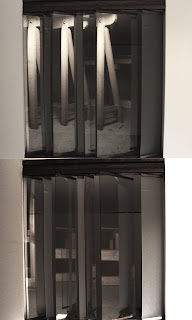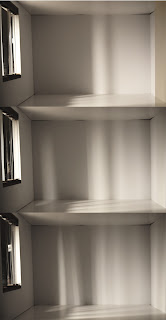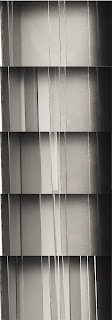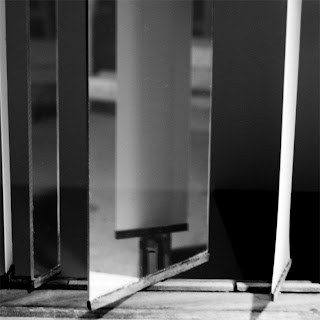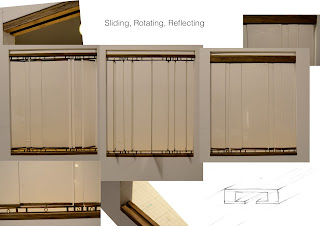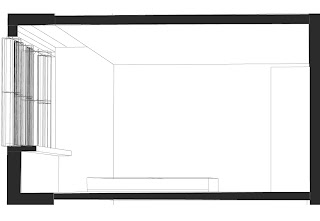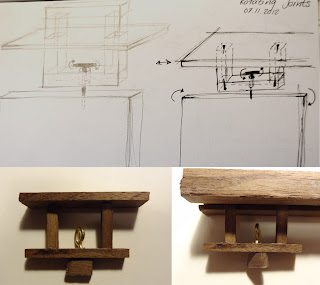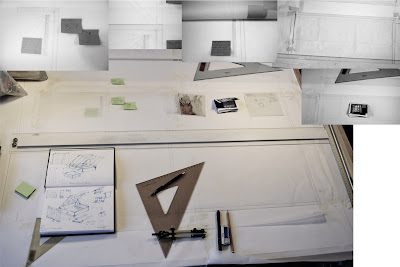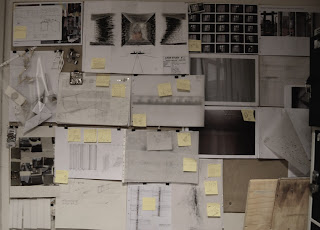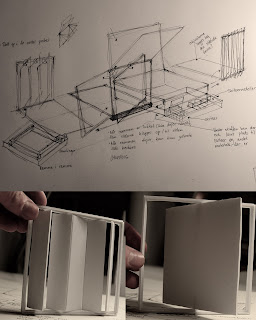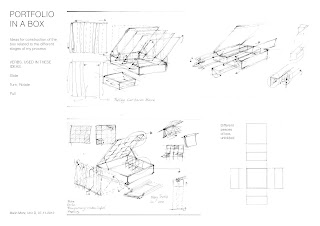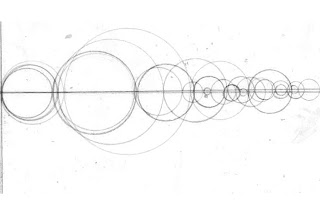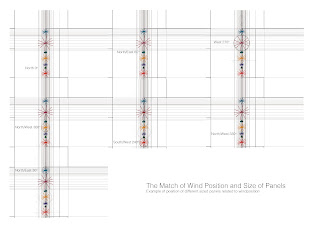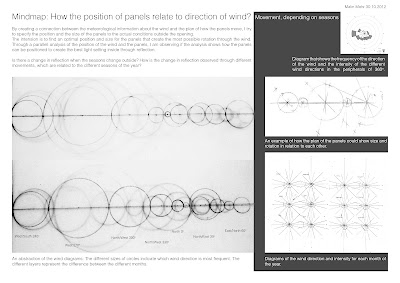
lørdag den 17. november 2012
Mixed Materials
Reflection, Rotation, Light Setting
Reflection, Rotation, Light Setting
By combining the acrylic and dim panels, the aspects from each material are put together.
Together they create a fragmented reflection, draw attention to the rotation and challenge the effects on their surroundings.
The light setting is now both effected by shadows and clear reflections of light
which creates a depth and hierarchy in the light.
Acryllic Panels
Reflection, Rotation, Light Setting
Reflection, Rotation, Light Setting
Depending on the rotation of the panels and the light from outside, they reflect their surroundings.
The reflection changes due to the different position of the panels through rotation.
The light setting inside the room changes and directs the focus on the whole room.
The relfection rotates through the room with and continues outside.
The reflection hereby draws attention to its surroundings 360 degrees.
At the same time the light setting changes through the rotation, the reflection on the panels changes.
From the inside you see a fragmented reflection of the outside when the rotation of the panels and the light meet at an angle where reflections are created.
The light setting inside the room is not only effected by reflection of daylight,
the panels also catch reflections further away from the opening.
The photo shows a reflection of the panels inside the room created by the light of a lamp three meters away from the model.
If this situation is related to my real surroundings of my window, the reflection shows inside my room could be for example my neighbor's turning on their light at night or the street lights.
This dimension creates an unexpected, deep connection between the inside and the outside which gives the panels a function as a filter.
The panels filter light from their surroundings through movement and reflection of the material.
Which light settings are shown is depending on how I open the panels and how the wind rotates them.
onsdag den 14. november 2012
torsdag den 8. november 2012
onsdag den 7. november 2012
torsdag den 1. november 2012
Interaction with Wind
From thoughts about mapping to thoughts about final device
Looking at these diagrams, observing the wind directions and intensities through the year,
it showed me that the wind from west is dominating and the intensity is much higher in the winter months than in the summer.
To translate these into my device I connected the different aspects, I wanted my device to contain, with the wind direction and intensity:
The position of the elements
The size of the elements
The material of the elements
These three aspects are deeply connected to each other and each aspect related to the other aspects in movement, effects and interaction with surroundings.
The position of the elements
The size of the elements
The material of the elements
These three aspects are deeply connected to each other and each aspect related to the other aspects in movement, effects and interaction with surroundings.
Inspiring Lecture
At the lecture, Bijoy Jain described their project of a way to; "Create an architecture that is non-dependent of position and material". With this he was referring to their experimental way of connecting experiences with material that either is found at site or how the materials somehow emphasize the experiences.
From his point of view the work of an architect can always be linked back to the need of connections: "As an architect we always look for a point to connect"
By linking his point of view to my intension with my project, I realized that I am trying to create a connection between my experience of the wind through my window and the experience of the movement of different materials. I somehow try to create an architecture that is depending on position and materials. At least I try to create something where the experience changes when materials or positions are changed.
From thoughts about mapping to thoughts about final device
Abonner på:
Opslag (Atom)

